Curriculum
Study of Works of Sri Aurobindo and The Mother
To read my books is not difficult because they are written in the simplest language, almost the spoken language. To draw profit from them, it is enough to read with attention and concentration and an attitude of inner goodwill with the desire to receive and to live what is taught.
To read what Sri Aurobindo writes is more difficult because the expression is highly intellectual and the language is much more literary and philosophic. The brain needs a preparation to be able truly to understand and generally a preparation takes time, unless one is specially gifted with an innate intuitive faculty.
In any case, I advise always to read a little at a time, keeping the mind as tranquil as one can, without making an effort to understand, but keeping the head as silent as possible, and letting the force contained in what one reads enter deep within. This force received in the calm and the silence will do its work of light and, if needed, will create in the brain the necessary cells for the understanding. Thus, when one re-reads the same thing some months later, one perceives that the thought expressed has become much more clear and close, and even sometimes altogether familiar.
It is preferable to read regularly, a little every day, and at a fixed hour if possible; this facilitates the brain-receptivity.
2 November 1959
*
204Read a little at a time, read again and again until you have understood.
23 May 1960
*
The true method is to read a little at a time, with concentration, keeping the mind as silent as possible, without actively trying to understand, but turned upwards, in silence, and aspiring for the light. Understanding will come little by little.
And later, in one or two years, you will read the same thing again and then you will know that the first contact had been vague and incomplete, and that true understanding comes later, after having tried to put it into practice.
14 October 1967
*
You came to earth to learn to know yourself.
Read Sri Aurobindo’s books and look carefully within yourself as deeply as you can.
4 July 1969
*
First of all read what Sri Aurobindo has written on education. Then you will have to find a way to put it into practice.
1972
*
205Sri Aurobindo came upon the earth to announce the manifestation of the supramental world and not merely did he announce this manifestation but embodied also in part the supramental force and showed by example what one must do to prepare oneself for manifesting it. The best thing we can do is to study all that he has told us and endeavour to follow his example and prepare ourselves for the new manifestation.
This gives life its real sense and will help us to overcome all obstacles.
Let us live for the new creation and we shall grow stronger and stronger by remaining young and progressive.
30 January 1972
*
Offer him your mind in all sincerity.
13 November 1970
*
Fix a time when you can be quiet every day.
Take one of Sri Aurobindo’s books. Read a sentence or two. Then remain silent and concentrated to understand the deeper meaning. Try to concentrate deeply enough to obtain mental silence and begin again daily until you obtain a result.
Naturally you should not fall asleep.
3 February 1972
*
206If one reads Sri Aurobindo carefully one finds the answers to all that one wants to know.
25 October 1972
*
By studying carefully what Sri Aurobindo has said on all subjects one can easily reach a complete knowledge of the things of this world.
*
Read Sri Aurobindo.
*
It is not by books that Sri Aurobindo ought to be studied but by subjects—what he has said on the Divine, on Unity, on religion, on evolution, on education, on self-perfection, on supermind, etc., etc.
*
Yes.
*
For the school, selections are better.
*
207Very simple things as in “Elements of Yoga”.
*
Not from the Yoga point of view.
*
Should these extracts be prepared by each individual teacherfnMother underlined these words and commented “Yes” in the margin. according to the needs of the class, subject to the approval of the Board (in consultation with the University Board)?
Or should the Board undertake to draw up (in consultation with the University Board) a graded selection from the extracts recommended by the individual teachers?
No, because it would not be plastic enough.
*
Yes.
*
208No.
*
It depends entirely on the capacities of the students.
*
Note to the Professors of the Higher Course
The Mother has suggested the following procedure for the study of Sri Aurobindo’s works in the Higher Course.
(1) The teacher first presents a subject and gives the necessary elements of information to the students.
(2) Next, he gives to the students, without comments, the most significant passage (or passages) from Sri Aurobindo, relevant to the subject, and asks them to read and ponder over the same.
(3) The students are then requested to express orally at the next class or in a short essay what they have understood and the conclusions they have reached.
25 October 1959
Surely the teacher can read to the students passages from Sri Aurobindo whenever he finds it useful.
209He may read them himself, ask the students to read them aloud or silently, in the class or at home; it depends on the time and circumstances. The important thing is that Sri Aurobindo’s writings should not be chewed and presented to the students as a semi-digested food. The teacher may give all the elements of appreciation but the students should have the direct contact, the joy of illumination. The teacher should be careful not to interpose himself as a screen between the mind of the student and the great consciousness of Sri Aurobindo.
This is naturally left to the teacher.
You may do as you prefer, but as told above, care must always 210be taken that Sri Aurobindo comes to the students after they have received the necessary information and preparation, but with all his freshness and power.
Why hesitate and limit yourself? You may surely quote other books of Sri Aurobindo or the Mother.§
10 November 1959
*
[The outline of a study project “On the Spiritual History of India” was read to the Mother. She commented:]
No! It won’t do. It is not to be done that way. You should begin with a big bang!
You were trying to show the continuity of history, with Sri Aurobindo as the outcome, the culmination. It is false entirely.
Sri Aurobindo does not belong to history; he is outside and beyond history.
Till the birth of Sri Aurobindo, religions and spiritualities were always centred on past figures, and they were showing as “the goal” the negation of life upon earth. So, you had a choice between two alternatives: either
—a life in this world with its round of petty pleasures and pains, joys and sufferings, threatened by hell if you were not behaving properly, or
—an escape into another world, heaven, nirvana, moksha.…
Between these two there is nothing much to choose, they are equally bad.
211Sri Aurobindo has told us that this was a fundamental mistake which accounts for the weakness and degradation of India. Buddhism, Jainism, Illusionism were sufficient to sap all energy out of the country.
True, India is the only place in the world which is still aware that something else than Matter exists. The other countries have quite forgotten it: Europe, America and elsewhere.… That is why she still has a message to preserve and deliver to the world. But at present she is splashing and floundering in the muddle.
Sri Aurobindo has shown that the truth does not lie in running away from earthly life but in remaining in it, to transform it, divinise it, so that the Divine can manifest here, in this physical world.
You should say all this at the first sitting. You should be square and frank… like that! [With her hands Mother makes a big square sign on the table.]
Then, when this is told, strongly, squarely, and there is no doubt about it—and then only—you can go on and amuse them with the history of religions and religious or spiritual leaders.
Then—and then only—you will be able to show the seed of weakness and falsehood that they have harboured and proclaimed.
Then—and then only—you will be able to discern, from time to time, from place to place, an “intuition” that something else is possible; in the Vedas, for instance (the injunction to descend deep into the cave of the Panis); in the Tantras also… a little light is burning.§
31 March 1967
*
Sri Aurobindo does not belong to the past nor to history.
Sri Aurobindo is the Future advancing towards its realisation.
212Thus we must shelter the eternal youth required for a speedy advance, in order not to become laggards on the way.
2 April 1967
*
Yes.
Yes, to those who want to learn in school but not for those who wish to study alone.
November 1967
*
If you want to use my articles or conversations, you should do it in French.
27 July 1959
*
Sri Aurobindo should be read in English, and I should be read in French.
4 March 1966
*
I said it would take years to understand properly. But if you are intelligent you can understand something immediately; and the teacher wants to assess your degree of intelligence.
7 October 1967
*
You seem to forget that Sri Aurobindo wrote for so many years the whole of the AryafnA monthly review (1914–1921) in which Sri Aurobindo’s major prose works first appeared. in perfect mental silence leaving the inspiration from above to go through and manifest through his hands on the typewriter.
7 March 1969
*
It is indeed a very good idea to study the Arya. The little you can understand by yourself is better and more effective than an ocean of explanation from another.
*
You may profitably teach biology. And at the same time continue your study of Sri Aurobindo.
It is better to do what you do thoroughly and most seriously, than to multiply your occupations.
To be a good teacher is not easy; but it is very interesting and a good opportunity to develop oneself.
As for reading the works of Sri Aurobindo, it opens the door of the future to us.
16 November 1972
*
I suppose it is only as a gymnastic for the mind!
*
215If you read metaphysics and ethics, you must do it just as mental gymnastics to give a little exercise to your brain, but never lose sight of the fact that this is not a source of knowledge and that it is not in this way that one can get knowledge. Naturally, this does not hold good for The Life Divine.…
*
It seems to me that apart from the work at the Building Service, if you feel like studying, it would be more worthwhile to read Sri Aurobindo’s books seriously and carefully without rushing. That will help you more than anything else for your sadhana.
9 March 1941
*
The Life Divine.
My blessings.
11 March 1941
*
[The Mother wrote out the following programme for a study group.]
1. Prayer (Sri Aurobindo, Mother—grant us your help in our endeavour to understand your teaching.)
2. Reading of Sri Aurobindo’s book.
3. A moment of silence.
4. One question can be put by whoever wants to put a question on what has been read.
5. Answer to the question.
6. No general discussion.
216This is not the meeting of a group but simply a class for studying Sri Aurobindo’s books.
31 October 1942
*
Languages
To unite East and West, to give the best of one to the other and make a true synthesis, a university will be established for all kinds of studies. Our school will form a nucleus of that university.
In our school I have put French as the medium of instruction. One of the reasons is that French is the cultural language of the world. The children can learn the Indian languages at a later stage. If more stress is laid upon Indian languages at present, then the natural tendency of the Indian mind will be to fall back upon the ancient literature, culture and religion. You know very well that we realise the value of ancient Indian things, but we are here to create something new, to bring down something that will be quite fresh for the earth. In this endeavour, if your mind is tied down to the ancient things, then it will refuse to go forward. The study of the past has its place, but it must not hamper the work for the future.§
*
Something like that.
All I can say is that we are considered to be one of the best—perhaps the very best—school in India for teaching French and I think it would be a good thing to deserve this appreciation.
217In my relations with the children here, I always speak to them in French.
*
There are many reasons of which the deeper ones you ought to know in your heart without needing to be told.
Among the exterior ones I can say that French, being a very precise language, is better for Science than English which is far superior for poetry.
There are also a few practical reasons among which is the fact, for all those who will have to earn their living when they are grown up, that all those who know French thoroughly well have most easily found employment.
Blessings.
9 February 1969
*
French is indeed the most precise and clearest language. But from the spiritual point of view it is not true that French is the best language to use; for English has a suppleness, a fluidity which French does not have, and this suppleness is indispensable for not deforming what is vaster and more comprehensive in the experience than what mental expression can formulate.
January 1950
*
[Concerning translation]
Bonté = Kindness and goodwill; Bienveillance is to see the good side of everything. It is not mere optimism which closes its eyes from bad. It is rather a psychic vision which sees the Good everywhere.
218There are many words which cannot be translated. Sri Aurobindo’s humour and irony cannot be translated into French. English humour when translated into French sounds stupid and flat; French humour when translated into English becomes cruel and meaningless. These two languages seem to be so similar and yet their genius is quite apart.
4 July 1956
*
I shall send you the book [Prières et Méditations] tomorrow; but you must study grammar well if you want to understand what you read.
20 June 1932
*
It is taught in advanced grammar courses, and there are also special books. One of the principal rules of style is that in a prose passage one should not use “I” except when it is absolutely impossible to avoid it, and in any case one should never begin two consecutive sentences with “I”. This gives you an idea of what you must do to give some style to your daily report!
20 July 1933
*
French must be written with simplicity and clarity.
29 September 1933
*
French gains by being written with simplicity and clarity; an accumulation of complicated images always renders the style pretentious.
*
219My dear little smile,
You are absolutely right, and I don’t see why, instead of reading interesting things, you should start doing boring exercises.
To learn a language one must read, read, read—and talk as much as one can.
With all my love.
10 July 1935
*
The best is to speak… courageously at every opportunity.
*
If it is to learn French you should take a textbook of French literature to study and read one or two books by each author mentioned in the textbook, beginning at the beginning, that is, with the earliest authors.
22 September 1936
*
I did not say that you should read only the earliest authors; I said you should read one or two books by each author mentioned in the literature course, beginning with the earliest ones.
24 September 1936
*
220It is good that you read a lot of French, that will teach you how to write.
7 April 1969
*
It is quite all right because it obliges them to think in English which is the best way to learn a language.
2 May 1946
*
The mother tongue is all right. But for those who want to do higher studies, the English is indispensable.
Blessings.
3 November 1967
*
If only one language is known this is better.
*
Teach both, the true language and what it has become—that will be very interesting indeed—and more than anything else can cure them of the habit of speaking bad Hindi.
*
Continue without hesitation.…
Amrita says that the situation of his Tamil class is much worse than that of the Hindi one. He says that he will continue even if the students come no more—he will teach to himself!
30 September 1959
*
222Hindi is good only for those who belong to a Hindi-speaking province. Sanskrit is good for all Indians.
*
I have the deepest respect for Indian languages and continue to study Sanskrit when I have time.
*
The Sanskrit ought to be the national language of India.
Blessings.
19 April 1971
*
On certain issues where You and Sri Aurobindo have given direct answers, we (Sri Aurobindo’s Action) are also specific, as for instance… on the language issue where You have said for the country that (1) the regional language should be the medium of instruction, (2) Sanskrit should be the national language, and (3) English should be the international language.
Are we correct in giving these replies to such questions?
Yes.
Blessings.
4 October 1971
*
[Languages to be studied in Auroville] fnWritten on the occasion of the inauguration of a school in Auroville. The Mother’s message for the school was: “A sincere will to know and to progress.”
(1) Tamil
(2) French
223(3) Simplified Sanskrit to replace Hindi as the language of India
(4) English as the international language.
15 December 1970
*
Facsimiles of the Mother’s Handwriting in Various Languages
224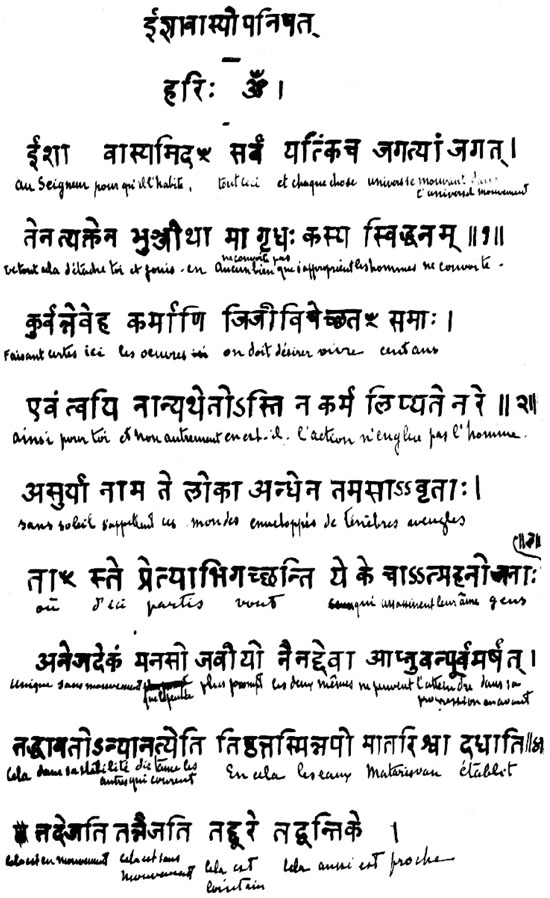
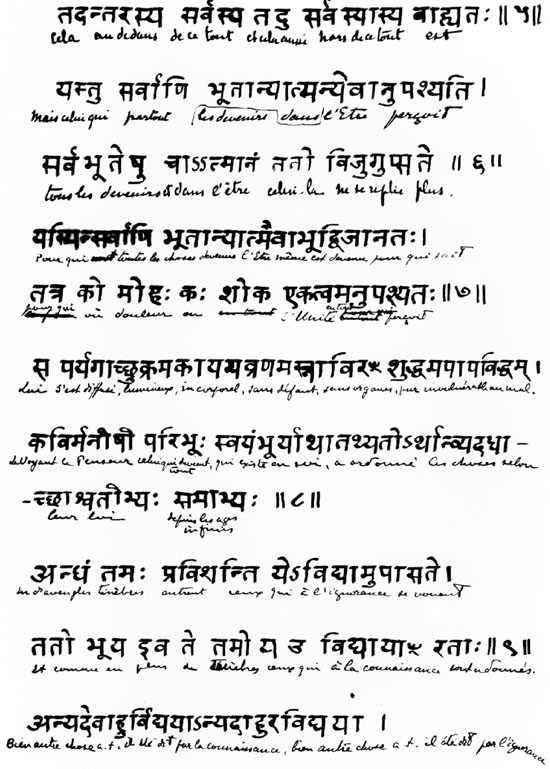
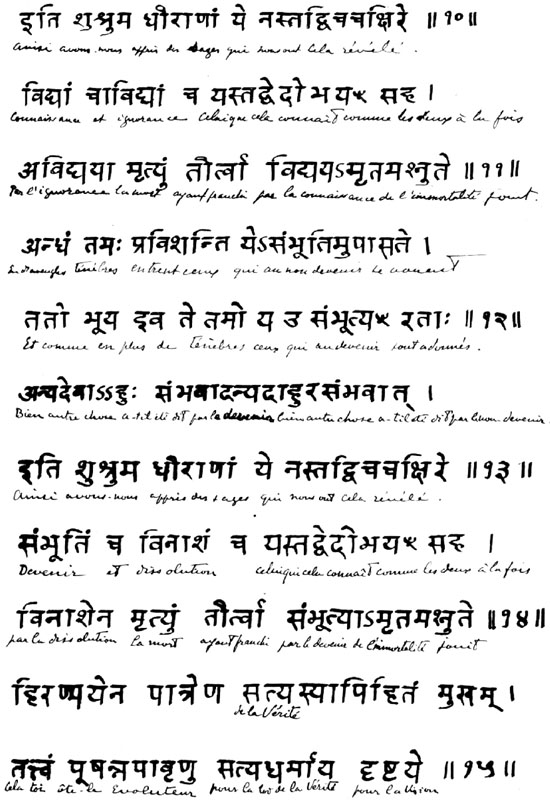
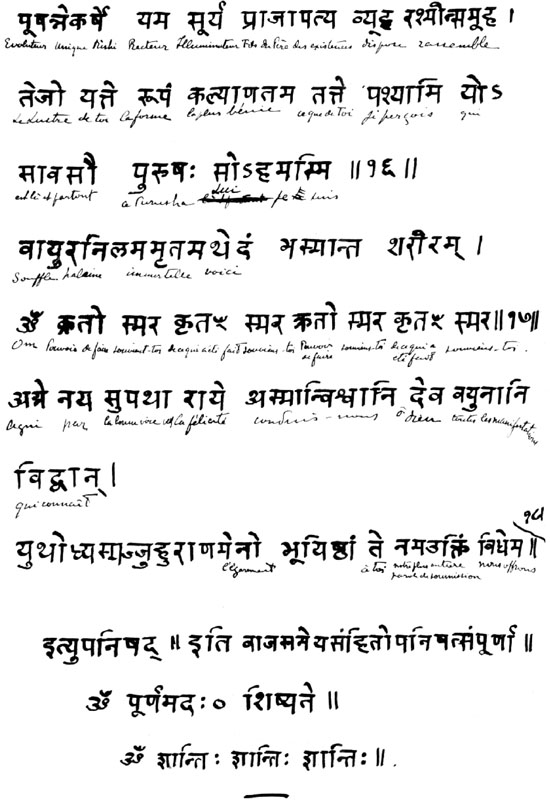

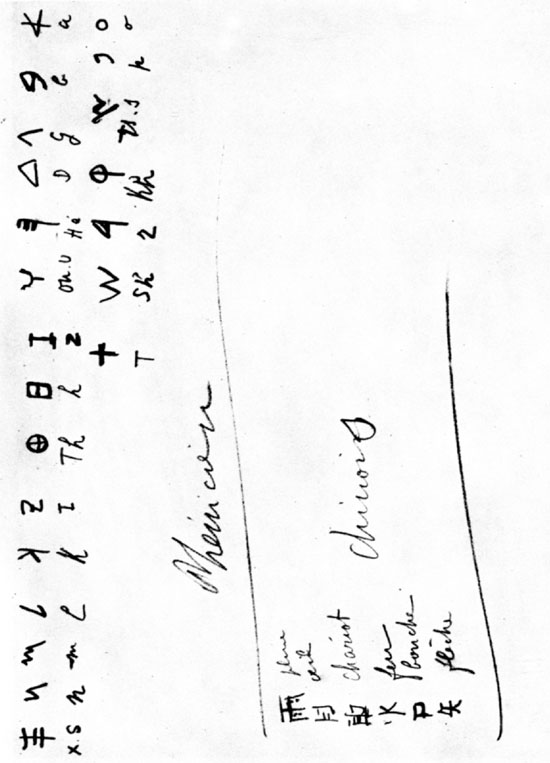
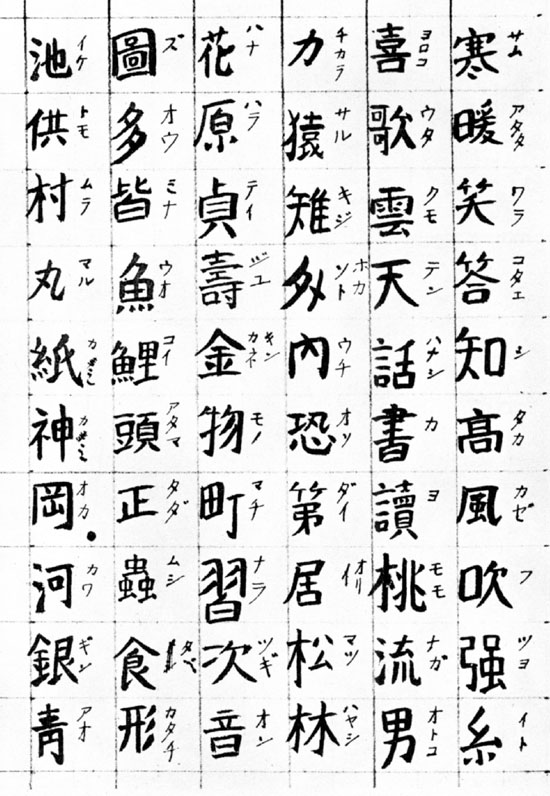
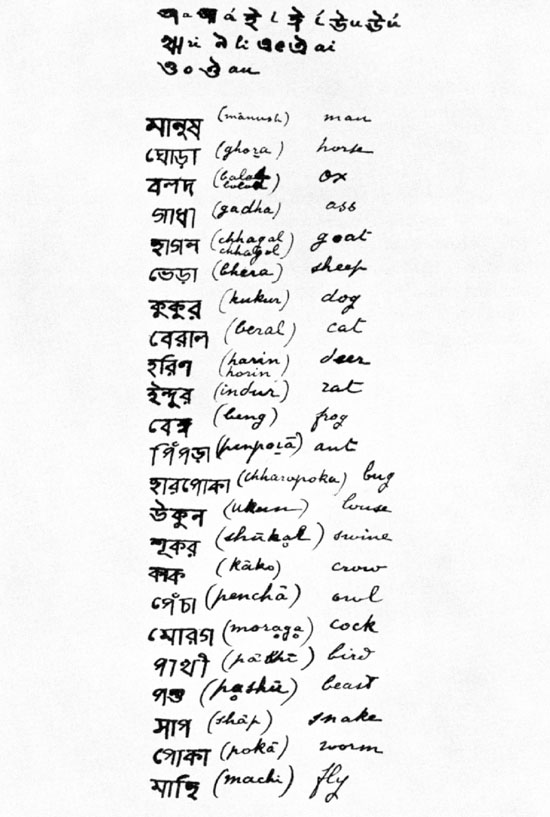
Arts
On the physical plane it is in beauty that the Divine expresses Himself.
*
In the physical world, of all things it is beauty that expresses best the Divine. The physical world is the world of form and the perfection of form is beauty. Beauty interprets, expresses, manifests the Eternal. Its role is to put all manifested nature in contact with the Eternal through the perfection of form, through harmony and a sense of the ideal which uplifts and leads towards something higher.
*
Let beauty be your constant ideal.
The beauty of the soul
The beauty of sentiments
The beauty of thoughts
The beauty of the action
The beauty in the work
so that nothing comes out of your hands which is not an expression of pure and harmonious beauty.
And the Divine Help shall always be with you.
*
Supreme art expresses the Beauty which puts you in contact with the Divine Harmony.
*
If art is to manifest something in the divine Life, there also a vast and luminous peace must express itself.
*
233Spiritual beauty has a contagious power.
*
Beauty is the joyous offering of Nature.
*
True art means the expression of beauty in the material world. In a world wholly converted, that is to say, expressing integrally the divine reality, art must serve as the revealer and teacher of this divine beauty in life.
*
In art also we must remain on the heights.
*
Good taste is the aristocracy of art.
*
Painting
The true painting aims at creating something more beautiful than the ordinary reality.
3 April 1932
*
If you like—but drawings from nature are best for learning.
23 December 1932
*
For learning, it would be better to enlarge the drawing so as to bring out the details.
5 January 1933
*
234To learn means months and months of study before any picture can be done; studies from nature, drawing first for a long time, painting only after.
If you are ready to study hard and regularly, then you can begin, otherwise it is better not to try.
6 January 1933
*
Naturally it depends on what the pictures are. Most often, they are about the things of the ordinary life, and therefore pull down the consciousness towards them.
10 December 1934
*
“Cubism” and Other Ultra-Modernism
If these painters were sincere, if they truly painted what they feel and see, the picture would be the expression of a confused mind and an unruly vital. But, unhappily, the painters are not sincere and then these pictures are nothing else than the expression of a falsehood, an artificial imagination based only on the will to be strange and to bewilder the public in order to attract attention and that has indeed very little to do with beauty.
27 March 1955
*
The largest of the flower-paintings is the best because it is more spontaneous and free. You must feel what you paint and do it with joy.
235Copy many beautiful things, but try even more to catch the emotion, the deeper life of things.
12 August 1962
*
My dear child,
I have seen your paintings—they are almost perfect. But what they lack is not technique—it is consciousness. If you develop your consciousness you will spontaneously discover how to express yourself. Nobody, and especially not official teachers, can teach you that.
So to leave here and go anywhere else, to any of the “Art Academies”, would be to leave the light and step into a pit of obscurity and unconsciousness.
You cannot learn to be an artist with tricks—it is as if you wanted to realise the Divine by imitating religious ceremonies.
Above all and always the most important thing is Sincerity.
Develop your inner being—find your soul, and at the same time you will find the true artistic expression.
With my blessings.
25 May 1963
*
Why do you want to do the details? That is not at all necessary. Painting is not done to copy Nature, but to express an impression, a feeling, an emotion that we experience on seeing the beauty of Nature. It is this that is interesting and it is this that 236has to be expressed, and it is because you have the possibility of doing this that I encourage you to paint.
1963
*
I have seen your paintings and certainly there has been progress over the last year.
Modern art is an experiment, still very clumsy, to express something other than the simple physical appearance. The idea is good—but naturally the value of the expression depends entirely on the value of that which wants to express itself.
At present almost all artists live in the lowest vital and mental consciousness and the results are quite poor.
Try to develop your consciousness, endeavour to discover your soul, and then what you will do will be truly interesting.
This is the programme I am giving you for the year which starts for you today.
12 August 1963
*
I am sorry to have to say that in the paintings, I do not see much improvement on last year. They lack sincerity and spontaneity; it is not seen, it is thought—and thought in a childish way. What I said last year has yet to be achieved. The consciousness must grow in light and sincerity and the eyes must learn to see artistically.
12 August 1964
*
I was not able to look at your paintings until today. Certainly they represent an effort, and the one which is framed is pleasing to the eye. But you think too much and you do not see enough. In other words, your vision is not original, spontaneous or direct, which means that your execution is still conventional and lacks originality—an imitation of what others do.
237There is, behind all things, a divine beauty, a divine harmony: it is with this that we must come into contact; it is this that we must express.
12 August 1965
*
Music
To all those who took part in today’s singing and music: Sri Aurobindo and myself have felt that there was a great progress this time. It was not only from the external point of view of execution, but in the greater aim of the concentration behind and in the inner attitude. May the day bring its benediction to all.
24 April 1932
*
I do not know who is spreading the rumour that I do not like music. That is not true at all—I like music very much, but it should be heard in a small circle, that is, played for five or six people at the most. When there is a crowd it becomes a social gathering, more often than not, and the atmosphere that is created is not good.
*
To keep yourself occupied with music and writing is always good; for your nature finds there its inborn occupation and that helps to maintain the vital energy and keep the balance.
About sadhana I should like to ask you: why not do sadhana through your music? Surely meditation is not the only way of doing sadhana. Through your music bhakti and aspiration can grow and prepare the nature for realisation.
If moments of meditation and concentration come of themselves then it is all right; but there is no need to force it.
23 January 1939
*
238Music follows the rule of all things on earth—unless they are turned to the Divine they cannot be divine.
25 May 1941
*
When somebody lives in a higher consciousness, the vibrations of this higher consciousness are manifested in whatever this person does, says or thinks. These higher vibrations are manifested by the very fact of the presence of this person upon earth.
Blessings.
*
You must have noticed that this tune generally comes after some trouble or chaos has been expressed. It comes as a solution to a problem. It means an advancement, a progress, a step forward in consciousness. It comes as an enlightenment. My music resembles the inner movements of the Sadhana. Sometimes a trouble, a chaos, a problem, a wrong movement which seemed conquered returns with a greater force. But then, as an answer or as an aid, the growth, the unveiling of the consciousness—and then the final enlightenment.
This music is very difficult to understand—especially for the Western mind. To people from the West it often means nothing; nor do they easily feel in them the corresponding movements. Mostly those who can appreciate the Indian Ragas can like that music; for there is some resemblance with the Ragas. 239But here too from the point of view of form, all conventions of musical laws and notations are broken.
30 October 1957
*
This music aims at awakening certain profound feelings.
To hear it one should make oneself as silent and passive as possible. And if, in the mental silence, a part of the being can take the attitude of the witness who observes without reacting or participating, then one can take account of the effect which the music produces on the feelings and emotions; and if it produces a state of deep calm and of semi-trance, then that is quite good.
15 November 1959
*
In the same way as one can share the emotions of another person by sympathy, spontaneously, by an affinity more or less deep, or else by an effort of concentration which ends in identification. It is this last process that one adopts when one listens to music with an intense and concentrated attention, to the point of checking all other noise in the head and obtaining a complete silence, into which fall, drop by drop, the notes of the music whose sound alone remains; and with the sound all the feelings, all the movements of emotion can be perceived, experienced, felt as if they were produced in ourselves.
20 October 1959
*
240You should eliminate the words and keep only the music in both cases.
If you know how to write the music, make copies of the tunes you want to play (without copying the words). If you do not know how to write the music, ask someone who does—Jo for example—to do it for you or to teach you to do it.
Do not keep the books with you, for these books can have a bad influence.
1965
*
What is it we should look for in music?
How to judge the quality of a piece of music?
How to develop good taste (for music)?
What do you think of the light music (cinema, jazz, etc.) which our children like very much?
The role of music lies in helping the consciousness to uplift itself towards the spiritual heights.
All that lowers the consciousness, encourages desires and excites the passions, runs counter to the true goal of music and ought to be avoided.
It is not a question of name but of inspiration—and the spiritual consciousness alone can be the judge there.
22 July 1967
*
241[Concerning a medieval love song]
The words are ridiculous and even in bad taste. Generally, when we studied a song, if the lyrics were unbecoming they would be changed and only the music retained.
Someone who has a sense of rhythm can do it very easily.
February 1968
*
[Concerning the words of two Christian canons, “Halleluia” and “Dona Nobis Pacem”, inscribed on a programme of vocal music]
It is all right on condition that it is not exclusive and that other religions are also represented.
March 1968
*
Poetry
Poetry is sensuality of the spirit.
*
For me true poetry is beyond all philosophy and beyond all explanation.
*
Photography
Modern photography has become an art and, like all other arts, it can effectively express the inner feelings and the soul, with a true sense of beauty.
*
Photography is an art when the photographer is an artist.
*
242Cinema
When one has the true attitude, everything can be an occasion to learn.
In any case, this excess should make you understand that the imperious desire of certain people to see films is as pernicious as all other desires.
11 May 1963
*
We would like to be able to show the children pictures of life as it should be, but we have not reached that point, far from it. These films have yet to be made. And at present, most of the time, the cinema shows life as it should not be, so strikingly that it makes you disgusted with life.
This too is useful as a preparation.
Films are permitted in the Ashram not as an amusement but as part of education. So we are faced with the problem of education.
If we consider that the child should learn and know only what can keep him pure of every low, crude, violent and degrading movement, we would have to eliminate at a stroke all contact with the rest of humanity, beginning with all these stories of war and murder, of conflict and deception which go under the name of history; we would have to eliminate all present contact with family, relatives and friends; we would have to exercise control over all the vital impulses of their being.
This was the idea behind the enclosed monastic life of convents, or the ascetic life in caves and forests.
This remedy proved to be quite ineffectual and failed to pull mankind out of the mire.
According to Sri Aurobindo, the remedy is quite different.
243We must face life as a whole, with all the ugliness, falsehood and cruelty it still contains, but we must take care to discover in ourselves the source of all goodness, all beauty, all light and all truth, in order to bring this source consciously into contact with the world so as to transform it.
This is infinitely more difficult than running away or shutting our eyes so as not to see, but it is the only truly effective way—the way of those who are truly strong and pure and capable of manifesting the Truth.
29 May 1968
*
Mother,
How should one see a film? If one identifies oneself with the characters and if it is a tragic or detective film, one is so much involved that one weeps or is frightened. And if one keeps aloof one cannot appreciate it very well. What is to be done then?
It is the vital that is affected and moved.
If you look mentally, the interest is no more the same; instead of being moved or troubled, you can judge quietly the value of the film, whether it is well constructed and well acted and whether the pictures have any artistic value.
In the first case you are “good public”, in the second you are more peaceful.
Blessings.
30 January 1970
*
[Concerning cinema in Auroville]
Children below fifteen years will see only educational films.
Care should be taken in selecting films to be shown in Auroville.§
244All that encourages the lower movements and actions must be avoided.fnThe first two paragraphs are based upon the Mother’s comments; when the notation was shown to her, she wrote the final paragraph.
25 February 1972
*
Learn to be silent
The cinema is given for those who like to look at pictures and to listen to the music and the words, and they have a right to look and to hear quietly.
Those who cannot stop talking, chatting, laughing and making a noise or even running about, ought not to be there, because all what they do, they can do elsewhere without spoiling the pleasure of those who are not like them.
So here is the decision: a silent audience—or no cinema.
12 October 1962
*
“The Wizard of Oz”fnThe Mother made this statement over the loudspeaker when this film was shown at the Ashram playground.
A short explanation will surely increase the interest of the picture to be shown to you tonight.
This picture is in three sections, two black and one, the most extensive, in colour. The two black sections (first and last) show how things appear in the physical world; the coloured one expresses a similar sequence of events and similar characters in the vital world, the world where one can go when the body is in deep sleep, when one gets out of the body. So long as you have a physical body, no true harm can happen to you in the vital world, for the physical body acts as a protection, and you 245can always return into it at will. This is shown in the picture in a classical way. You will see that the little girl wears on her feet some magic ruby-red slippers, and so long as she keeps the slippers on her feet nothing wrong can happen to her. The ruby-red slippers are the sign and the symbol of the connection with the physical body, and as long as the slippers are on her feet, she can, at will, return to her body and find shelter therein.
Two other details can be noted with interest. One is the snow shower that saves the party from the influence of the wicked witch who by her black magic has stopped their advance towards the emerald castle of beneficent vitality. In the vital world, snow is the symbol of purity. It is the purity of their feelings and intentions that saves them from the great danger. Note also that to go to the castle of the good wizard they must follow the broad path of golden bricks, the path of luminous confidence and joy.
The second is: when Dorothy throws water on the straw man to save him from burning, some water falls on the face of the wicked witch who lit the fire and at once she gets dissolved and dies. The water is the symbol of the power of purification and no hostile being or force can resist this power handled with goodwill and sincerity.
Finally, when the good fairy teaches the little girl how to go back home by knocking her red slippers one against the other, she says that nothing is better than home; by “home” she means the physical world which is the place of protection and realisation.
As you see, the subject of this picture is interesting and not altogether devoid of knowledge. Unhappily the rendering is not as beautiful and harmonious as it could have been. In the setup there are some serious faults of taste and many regrettable vulgarities.
14 September 1952
*
246Other Subjects
To know how to read and write, to speak at least one language correctly, to know a little general geography, have an overall view of modern science and know some rules of conduct—this is indispensable for living in a group or a community.
*
It seems to me that psychology without yoga is lifeless.
The study of psychology must necessarily lead to yoga, at least to practical yoga if not theoretical.
23 December 1960
*
Do not divide what is one. Both science and spirituality have the same goal—the Supreme Divinity. The only difference between them is that the latter knows it and the other not.
December 1962
*
Sweet Mother,
There are some things which are good for my progress but seem to me very uninteresting. For example, mathematics is a good subject but it does not appeal to me. Please tell me, how can I take interest in the things to which I am not drawn?
There are a lot of things that we need to know, not because we find them specially interesting but because they are useful and even indispensable; mathematics is one of them.
It is only when we have a strong background of knowledge that we can face life successfully.
*
247History and geography can only become interesting to minds that are eager to know the earth on which they live.
Before one can take an interest in these two subjects, one must widen the horizons of one’s thirst for knowledge as well as one’s field of consciousness.
*
They can help in several ways:
1. To become capable of receiving and bearing the light of the Truth, the mind must be made strong, wide and supple. These studies are a very good way to achieve this.
2. If you study science deeply enough, it will teach you the unreality of appearances and thus lead you to the spiritual reality.
3. The study of all the aspects and movements of physical Nature will bring you into contact with the universal Mother, and so you will be closer to me.
17 December 1966
*
As for arithmetic, I am much more in favour of practical than of written arithmetic, with an emphasis on the development of the faculty of mental arithmetic. It is more difficult, but it greatly increases the capacity for inner visualisation and reasoning. It is a very effective way of developing true intelligence instead of memorised knowledge.
When one knows mental arithmetic and understands arithmetic, it then takes very little time to learn written arithmetic.
With the help of similar objects—you can begin with the children themselves for small numbers and then take pebbles and counters when it comes to tens and hundreds.
248In this way, by taking a little trouble, you can teach them all the operations logically and so they become for the children something real and living which has a concrete meaning.
Sanskrit (Isha Upanishad, with French translation)
Hebrew
Phoenician
Chinese
Japanese
Bengali